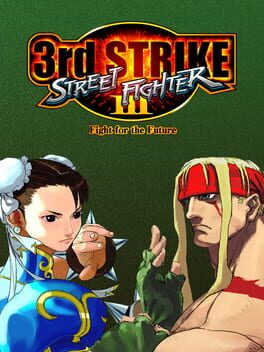Trivia Browser
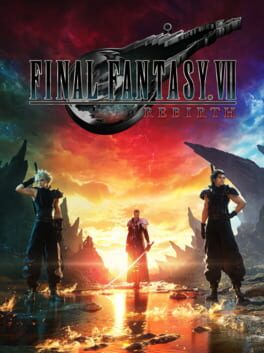
▲
2
▼
In April 2023, Final Fantasy VII Rebirth's lead battle programmer Satoru Koyama discussed the challenges he aimed to tackle when working on the game, with his main aspiration being to enhance the capabilities of AI characters. He emphasized the desire to create an AI capable of juggling a variety of techniques and magic, going beyond the limitations of Final Fantasy VII Remake's combat system. He said his goal was to surpass the Gambit System introduced in Final Fantasy XII, which allowed players to set commands and actions based on specific conditions, providing a wealth of strategic options.
Final Fantasy 7 Remake's Lead Battle Designer Wants To "Surpass" 12's Gambit System:
https://www.thegamer.com/final-fantasy-7-remake-lead-battle-designer-surpass-12-gambit-system/
Lead Final Fantasy 7 Remake combat dev wants to 'surpass' one of FF12's most praised features:
https://www.gamesradar.com/lead-final-fantasy-7-remake-combat-dev-wants-to-surpass-one-of-ff12s-most-praised-features/
Final Fantasy 7 Rebirth Battle Programmer Wants Combat to Surpass Final Fantasy 12’s Gambit System:
https://gamingbolt.com/final-fantasy-7-rebirth-battle-programmer-wants-combat-to-surpass-final-fantasy-12s-gambit-system
https://www.thegamer.com/final-fantasy-7-remake-lead-battle-designer-surpass-12-gambit-system/
Lead Final Fantasy 7 Remake combat dev wants to 'surpass' one of FF12's most praised features:
https://www.gamesradar.com/lead-final-fantasy-7-remake-combat-dev-wants-to-surpass-one-of-ff12s-most-praised-features/
Final Fantasy 7 Rebirth Battle Programmer Wants Combat to Surpass Final Fantasy 12’s Gambit System:
https://gamingbolt.com/final-fantasy-7-rebirth-battle-programmer-wants-combat-to-surpass-final-fantasy-12s-gambit-system
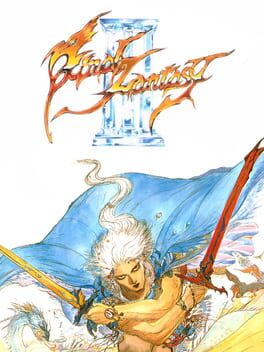
▲
1
▼
 In a 2020 interview, designer Koichi Ishii revealed that despite the NES hardware only being able to display three colors per sprite, he felt that he could not make a believable design for the game's jobs unless he "dug deep into the job's background story and what kind of character it will be." He was surprised when some of these design limitations stuck around for future games he did not work on like Final Fantasy Tactics, and elaborated on what he imagined the White Mage and Dark Knight jobs looked like as he originally designed them:
In a 2020 interview, designer Koichi Ishii revealed that despite the NES hardware only being able to display three colors per sprite, he felt that he could not make a believable design for the game's jobs unless he "dug deep into the job's background story and what kind of character it will be." He was surprised when some of these design limitations stuck around for future games he did not work on like Final Fantasy Tactics, and elaborated on what he imagined the White Mage and Dark Knight jobs looked like as he originally designed them:"The image I had is that the red part of a white mage's robe is embroidered from red threads imbued with magic when spun together, increasing the wearer's magical power. The reasoning for the red threads being on the sleeves is that magic leaves the body through the hands and wrists, so that area is most effective. I was very particular about the lore that equipment like wands and amulets are used as a catalyst to turn natural power into magic, stimulating the user's magic strength. That's why I was adamant about never giving magic users iron equipment; if they use normal metals, their magic power will disperse so at least go with mythril ore...stuff like that.
[...] when [the dark knight is] KO'd in battle only their armor is left, as if the body inside has disappeared. The reason for that, in my imagining, is that they have a dark pact where their body is engraved with dark magic runes, and when they're KO'd the dark magic runes take their soul and body so only the empty armor remains. I had that kind of unique image for each job as I was creating it."
[...] when [the dark knight is] KO'd in battle only their armor is left, as if the body inside has disappeared. The reason for that, in my imagining, is that they have a dark pact where their body is engraved with dark magic runes, and when they're KO'd the dark magic runes take their soul and body so only the empty armor remains. I had that kind of unique image for each job as I was creating it."
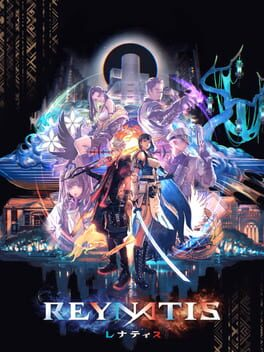
▲
1
▼
In an interview with the game's director Takumi Isobe published in Famitsu on February 22, 2024, he mentioned that the Kingdom Hearts and Final Fantasy series significantly impacted his sense of values and influenced the development of Reynatis.

▲
1
▼
 Banjo-Tooie has become somewhat infamous for its large-scaled and convoluted structure in comparison to its predecessor, Banjo-Kazooie, with far more larger interconnected worlds with longer, complex puzzles that typically require backtracking, in comparison to Banjo-Kazooie's more straightforward and compact, self-contained levels and objectives.
Banjo-Tooie has become somewhat infamous for its large-scaled and convoluted structure in comparison to its predecessor, Banjo-Kazooie, with far more larger interconnected worlds with longer, complex puzzles that typically require backtracking, in comparison to Banjo-Kazooie's more straightforward and compact, self-contained levels and objectives.According to Steve Malpass, one of Banjo-Tooie's game designers, the game was designed more in the vein of an adventure game as opposed to a platformer, being heavily inspired by The Legend of Zelda: Ocarina of Time in particular. The development team was aware of how overcomplicated the game's structure had become by its launch (the QA department was vocal about the backtracking and navigation issues), but it was ultimately too late for them to streamline it. The Warp Pads found throughout the worlds were actually included after the levels were designed, as an attempt to mitigate the aforementioned navigation issues.
Steve Malpass comments on Banjo-Tooie's game design within the video comments:
https://www.youtube.com/watch?v=36wclKt4vdk&lc=Ugw8_LWH3PTwR6r3FSJ4AaABAg
All of Steve Malpass' comments posted in this Reddit thread:
https://www.reddit.com/r/BanjoKazooie/comments/1avpvub/steve_malpasss_comments_about_banjotooie/
https://www.youtube.com/watch?v=36wclKt4vdk&lc=Ugw8_LWH3PTwR6r3FSJ4AaABAg
All of Steve Malpass' comments posted in this Reddit thread:
https://www.reddit.com/r/BanjoKazooie/comments/1avpvub/steve_malpasss_comments_about_banjotooie/

▲
3
▼
Dan Arey, a former Crystal Dynamics and Naughty Dog developer who worked on the second and third games in the series, praised the first game in a 1996 Retro Gamer magazine interview. Prior to joining Naughty Dog, he talked about how the game maintained its unique identity in the world of 3D platformers, even when faced with the groundbreaking influence of Super Mario 64. Arey emphasized that while Super Mario 64 embraced open-ended levels, programmer Andy Gavin and director Jason Rubin designed Crash Bandicoot to adhere to a more old-school, level-based structure while adding 3D depth to its platforming challenges by "going down 3D roads with occasional 2D side-wave elements, but everything was very focussed in terms of mechanics". Arey also expressed admiration for the game's technical achievements even before he joined Naughty Dog, which likely soon motivated him to do so:
"We saw some early demos when I was at Crystal Dynamics, and we were asking ourselves how they were getting so many polygons on the PlayStation. What they had done was pre-calculate the polygons you couldn't see from a fixed-camera viewpoint, so it looked like there were many more polygons being pushed on the system than ever before."

subdirectory_arrow_right Running with Scissors (Company)
▲
1
▼
Running with Scissors wanted to make "the most outrageous game they could", and began work on Postal after being inspired by Robotron: 2084. In 1997, they filed a trademark for the word "Postal" in the area of electronic gaming, but were soon counter-filed by the United States Postal Service, who claimed to be moving into video games: Marvin Travis Runyon, the United States Postmaster General at the time, even sent Running with Scissors a latter condemning the game's theme. The legal battle was ultimately dismissed with prejudice in June 2004.
The theme was also highly controversial not just within the larger media, but also within the video game industry. This was a surprise to CEO Vince Desi, who felt Postal was more comical and over-the-top, and stated that the game was not meant to be taken seriously. After it was released, Postal was targeted by Senator Joe Lieberman, who called the game "one of the worst things in America". Additionally, retail chains such as CompUSA and Walmart refused to sell the game.
The theme was also highly controversial not just within the larger media, but also within the video game industry. This was a surprise to CEO Vince Desi, who felt Postal was more comical and over-the-top, and stated that the game was not meant to be taken seriously. After it was released, Postal was targeted by Senator Joe Lieberman, who called the game "one of the worst things in America". Additionally, retail chains such as CompUSA and Walmart refused to sell the game.
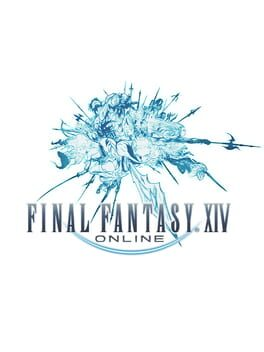
▲
1
▼
According to Final Fantasy XVI's creative director/scenario writer Kazutoyo Maehiro and the game's producer Naoki Yoshida in a 2023 IGN article, in the Japanese version of the game, Chocobos are referred to as "uma" (馬), which is the Japanese word for "horse". Initially, neither Maehiro or director Hiroshi Takai considered using Chocobos in the game at all, because according to Maehiro, "when thinking about the story, the worldview, and a feeling of reality, a horse just looked better as a silhouette when straddled." Yoshida elaborated that horses fit better when building a world based on European medieval gothic fantasy:
Despite this explanation, Yoshida still instructed the development team to include Chocobos in the game in an effort to stay faithful to the series' long-standing elements. The Japanese version also still refers to them as Chocobos and horses interchangeably. Maehiro stated that he tried to tie the Chocobos into the history of Valisthea through partnerships with its people, in an effort to create something culturally familiar. He justified this by stating that in Japanese, they "sometimes refer to a car as 'legs', or not having a car as 'having no legs'; and in the same way, the people of Valisthea refer to Chocobos as 'horses'." He subsequently implied that actual horses may exist in other regions in the game's world, but that in Valisthea, Chocobos function as their regional equivalent to actual horses. Localization director Michael-Christopher Koji Fox also stated that he decided not to refer to Chocobos as horses in the game's English translation:
The terminology in the decision to refer to Chocobos as horses resulted in confused or joking reactions from Japanese players online, since this is not the first time Chocobos were referred to as horses in the series. In the original 2010 release of Final Fantasy XIV Online, the kanji characters for horse and bird (鳥 , "tori") were used together as "horsebird" (馬鳥) in the Japanese script in place of the standard katakana for Chocobo (チョコボ). At release, several other katakana terms were replaced with kanji symbols, with some terms existing in-game as written in Chinese rather than Japanese. Square Enix offered several conflicting explanations for the changes, including the need to "build atmosphere", and to consolidate terminology with the then-upcoming Chinese-language release, but these did not help as the change caused an uproar among Japanese players, resulting in Chocobo being reincorporated into the Japanese version's script in a future update. The controversy would later be referenced in the 2013 reboot of Final Fantasy XIV Online through a piece of dialogue spoken by Golden Uma Doshin, a Quest NPC found in Central Shroud as part of the limited time quest "Turn Around, Beautiful":
"In reality, horses are animals that can build strong partnerships with humans. We share a long history with them. Weapons involving horses also appear more realistic. Especially with the improvement in graphics being so remarkable, there is a chance that it becomes difficult to lie or deceive viewers, in a good way, and as a result, may impair the sense of immersion. Chocobos are based on birds, which first of all means they don’t stand on four legs, and that makes them more difficult to mount. When compared with a horse it might not feel as stable to ride a Chocobo, and their wings aren’t big and strong enough to take you to the sky, either."
Despite this explanation, Yoshida still instructed the development team to include Chocobos in the game in an effort to stay faithful to the series' long-standing elements. The Japanese version also still refers to them as Chocobos and horses interchangeably. Maehiro stated that he tried to tie the Chocobos into the history of Valisthea through partnerships with its people, in an effort to create something culturally familiar. He justified this by stating that in Japanese, they "sometimes refer to a car as 'legs', or not having a car as 'having no legs'; and in the same way, the people of Valisthea refer to Chocobos as 'horses'." He subsequently implied that actual horses may exist in other regions in the game's world, but that in Valisthea, Chocobos function as their regional equivalent to actual horses. Localization director Michael-Christopher Koji Fox also stated that he decided not to refer to Chocobos as horses in the game's English translation:
"I remember seeing it in the script and remarking, 'You're saying 'horse' here. You're sure that's OK?' But Maehiro said, 'Yes, this is what we wanted to do.' In English, we never really wanted to use the word horse, because Chocobos and horses are entirely different. It just sounded weird to us in that sense. But we do use words like 'steed'; and I think 'courser' [a medieval word for a warhorse,] as well."
The terminology in the decision to refer to Chocobos as horses resulted in confused or joking reactions from Japanese players online, since this is not the first time Chocobos were referred to as horses in the series. In the original 2010 release of Final Fantasy XIV Online, the kanji characters for horse and bird (鳥 , "tori") were used together as "horsebird" (馬鳥) in the Japanese script in place of the standard katakana for Chocobo (チョコボ). At release, several other katakana terms were replaced with kanji symbols, with some terms existing in-game as written in Chinese rather than Japanese. Square Enix offered several conflicting explanations for the changes, including the need to "build atmosphere", and to consolidate terminology with the then-upcoming Chinese-language release, but these did not help as the change caused an uproar among Japanese players, resulting in Chocobo being reincorporated into the Japanese version's script in a future update. The controversy would later be referenced in the 2013 reboot of Final Fantasy XIV Online through a piece of dialogue spoken by Golden Uma Doshin, a Quest NPC found in Central Shroud as part of the limited time quest "Turn Around, Beautiful":
"Chocobo... chocobo... chocobo... Nothing but horsebirds in this stable. A sight to disturb Eastern eyes, to be sure."
IGN: Chocobos are Called 'Horses' in the Japanese Version of Final Fantasy XVI:
https://www.ign.com/articles/chocobos-are-called-horses-in-final-fantasy-xvi-japanese-version
Censored Gaming: In The Japanese Version Of Final Fantasy XVI, Chocobos Are Called "Horses":
https://www.youtube.com/watch?v=7AT-QpAwkqQ
Destructoid: Final Fantasy XIV text issue turns Chocobos to Horsebirds:
https://www.destructoid.com/final-fantasy-xiv-text-issue-turns-chocobos-to-horsebirds/
Final Fantasy XIV Online wiki articles:
https://ffxiv.consolegameswiki.com/wiki/Golden_Uma_Doshin
https://ffxiv.consolegameswiki.com/wiki/Turn_Around,_Beautiful
https://www.ign.com/articles/chocobos-are-called-horses-in-final-fantasy-xvi-japanese-version
Censored Gaming: In The Japanese Version Of Final Fantasy XVI, Chocobos Are Called "Horses":
https://www.youtube.com/watch?v=7AT-QpAwkqQ
Destructoid: Final Fantasy XIV text issue turns Chocobos to Horsebirds:
https://www.destructoid.com/final-fantasy-xiv-text-issue-turns-chocobos-to-horsebirds/
Final Fantasy XIV Online wiki articles:
https://ffxiv.consolegameswiki.com/wiki/Golden_Uma_Doshin
https://ffxiv.consolegameswiki.com/wiki/Turn_Around,_Beautiful

subdirectory_arrow_right Starglider (Collection)
▲
2
▼
Argonaut Software's Starglider games released in the 1980s, which were first-person combat flight simulators rendered with wireframe vector graphics, inspired them to come up with a prototype that would eventually lead to the creation of the first Star Fox. They created a prototype for the Nintendo Entertainment System codenamed as "NESGlider" that was based on the original game, utilizing a similar method to accelerate graphics to how the Super FX chip for the Super Nintendo Entertainment System later would. When they showed this prototype to Nintendo in 1990, they were instead advised to port and develop the game for the then-upcoming SNES. After Argonauts did that, Nintendo declared that this was the best 3D graphics the console could produce and that they hadn't designed the SNES with 3D games in mind. Argonaut staff suggested that if they wanted better, then they should let them design a 3D chip for them, and thus the Super FX chip was born.
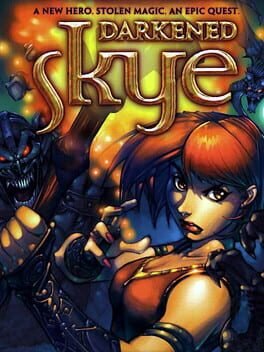
▲
3
▼
When a Skittles game was first proposed to eventual Darkened Skye executive producer Elizabeth Braswell by her boss, she responded "well, you have two choices: you can fire me now, and make the next year and a half much easier on me, or you can, like, not make me do this." The following night, she went to a bar and got drunk over the Skittles project, which she deemed "the end of [her] career". While intoxicated, she conceived the idea of using Skittles as a vehicle to do a self-aware high fantasy adventure game she had always wanted to do, but never got the chance.
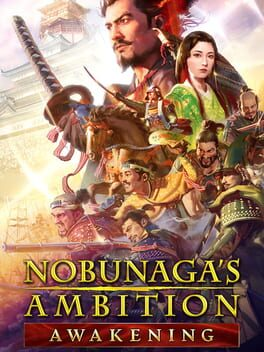
subdirectory_arrow_right Nobunaga's Ambition (Collection)
▲
1
▼
In an interview with the game's producer Michi Ryu published on Noisy Pixel on June 22, 2023, in response to a question asking if Nobunaga's Ambition: Awakening would bring together all of the series' history in honor of its 40th anniversary, he stated:
In a separate interview with Siliconera, he clarified that the game's concept was the most impactful change made during development, since in previous Nobunaga's Ambition titles, officers only acted when players ordered them to. With Awakening, officers are able to think and act on their own in various situations without orders, which Ryu felt was closer to how humans act in real-life and to how various officers during Japan's Warring States period would have acted without orders from daimyos, the latter of which they tried to show in the game.
"The goal of this series is to create a realistic experience of Warring States Japan, but other than that vision, we are not too conscious about the past that much. Although there may have been staff members who were. Even if we had created the same system as past games, ideas change as people change. As gaming platforms evolve, we can also show more, so I didn’t worry about it even if we made the same thing in the past. For this game, the concept is a living officer who thinks for himself and act accordingly, but I focused more on how we wanted to show things next, and not on doing something that has not been done before."
In a separate interview with Siliconera, he clarified that the game's concept was the most impactful change made during development, since in previous Nobunaga's Ambition titles, officers only acted when players ordered them to. With Awakening, officers are able to think and act on their own in various situations without orders, which Ryu felt was closer to how humans act in real-life and to how various officers during Japan's Warring States period would have acted without orders from daimyos, the latter of which they tried to show in the game.
Nobunaga’s Ambition: Awakening Interview – Producer Reflects on 40 Years of Nobunaga and its Future:
https://noisypixel.net/nobunagas-ambition-awakening-producer-interview/
Interview: How Nobunaga’s Ambition: Awakening Builds on the Past Entries:
https://www.siliconera.com/interview-how-nobunagas-ambition-awakening-builds-on-the-past-entries/
https://noisypixel.net/nobunagas-ambition-awakening-producer-interview/
Interview: How Nobunaga’s Ambition: Awakening Builds on the Past Entries:
https://www.siliconera.com/interview-how-nobunagas-ambition-awakening-builds-on-the-past-entries/
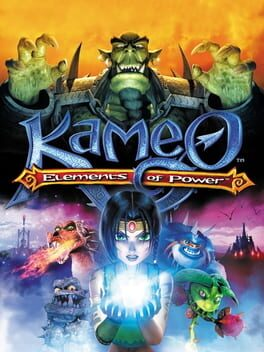
subdirectory_arrow_right Kameo: Elements of Power (Game)
▲
1
▼
 In its early stages, when it was a GameCube title being published by Nintendo, Kameo was meant to be a Pokémon-style game where the player could collect hundreds of baby creatures and nurture them to adulthood, utilizing their unique abilities. However, when the game's development was shuffled over to the Xbox platform as a result of Microsoft's purchase of Rare in late 2002, it was decided somewhere along the way to retool the game in an attempt to make it fit the new Xbox demographic, removing the Pokémon aspect and repurposing some of the monsters as additional forms that the protagonist Kameo could take on. In light of this, Rare had also attempted to disguise the fact that Kameo herself was a fairy, as they felt that fairies were too soft for the Xbox demographic, by repositioning her as more of an elf.
In its early stages, when it was a GameCube title being published by Nintendo, Kameo was meant to be a Pokémon-style game where the player could collect hundreds of baby creatures and nurture them to adulthood, utilizing their unique abilities. However, when the game's development was shuffled over to the Xbox platform as a result of Microsoft's purchase of Rare in late 2002, it was decided somewhere along the way to retool the game in an attempt to make it fit the new Xbox demographic, removing the Pokémon aspect and repurposing some of the monsters as additional forms that the protagonist Kameo could take on. In light of this, Rare had also attempted to disguise the fact that Kameo herself was a fairy, as they felt that fairies were too soft for the Xbox demographic, by repositioning her as more of an elf. It was a direction that creative director George Andreas felt was fruitless in hindsight, and he ultimately now believes that the game should have just been scrapped entirely.
Footage of GCN Kameo showcasing the Pokemon-esque mechanics:
https://youtu.be/juVEpxhUk-Q?t=11
Retro Gamer interview with Phil Tossell:
https://issuu.com/roylazarovich/docs/retro_gamer_122
Eurogamer article on Andreas lamenting over Kameo:
https://www.eurogamer.net/rare-we-should-have-scrapped-kameo
https://youtu.be/juVEpxhUk-Q?t=11
Retro Gamer interview with Phil Tossell:
https://issuu.com/roylazarovich/docs/retro_gamer_122
Eurogamer article on Andreas lamenting over Kameo:
https://www.eurogamer.net/rare-we-should-have-scrapped-kameo
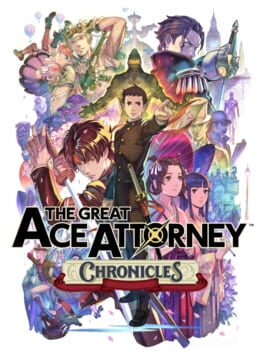
subdirectory_arrow_right The Great Ace Attorney 2: Resolve (Game), The Great Ace Attorney: Adventures (Game)
▲
2
▼
Due to long-standing copyright issues regarding the character Sherlock Holmes brought about by Sir Arthur Conan Doyle's estate (which had previously delayed the games' release), the international release of The Great Ace Attorney games changed his name to "Herlock Sholmes". According to series creator Shu Takumi, this was done as an allusion to "Arsène Lupin versus Herlock Sholmes", a story collection by Maurice Leblanc.
Following the announcement of the name "Herlock Sholmes", various memes came about surrounding the character and the circumstances for the renaming in regards to copyright law. This got to the point where major news outlets began covering it, with some noting that the goofy-sounding name "fit with the comedic and sometimes irreverent tone of the Ace Attorney series, even if it does leave a few things lost in translation."
Following the announcement of the name "Herlock Sholmes", various memes came about surrounding the character and the circumstances for the renaming in regards to copyright law. This got to the point where major news outlets began covering it, with some noting that the goofy-sounding name "fit with the comedic and sometimes irreverent tone of the Ace Attorney series, even if it does leave a few things lost in translation."
"Herlock Sholmes" name explained:
https://www.eurogamer.net/articles/2021-04-24-why-sherlock-holmes-is-called-herlock-sholmes-in-the-great-ace-attorney-chronicles
https://www.vice.com/en/article/3aq54w/how-the-great-ace-attorney-finally-went-abroad
Memes explained:
https://gamerant.com/herlock-sholmes-taking-twitter/
Quote source:
https://www.cbr.com/ace-attorney-herlock-sholmes/
https://www.eurogamer.net/articles/2021-04-24-why-sherlock-holmes-is-called-herlock-sholmes-in-the-great-ace-attorney-chronicles
https://www.vice.com/en/article/3aq54w/how-the-great-ace-attorney-finally-went-abroad
Memes explained:
https://gamerant.com/herlock-sholmes-taking-twitter/
Quote source:
https://www.cbr.com/ace-attorney-herlock-sholmes/

subdirectory_arrow_right Star Fox (Franchise)
▲
2
▼
 According to character designer Takaya Imamura, each of the original Star Fox team members were modeled after his fellow Nintendo staff members at the time:
According to character designer Takaya Imamura, each of the original Star Fox team members were modeled after his fellow Nintendo staff members at the time:•Fox was based on Shigeru Miyamoto, with Miyamoto said to have a fox-like face.
•Falco was based on Tsuyoshi Watanabe, as the development team laughed over how his nose stuck out like a beak.
•Peppy was based on Katsuya Eguchi, with Eguchi said to have a mouth like a hare.
•Slippy was based on Yoichi Yamada, with Yamada said to have large, round eyes.
Imamura has also stated that he based Andross on his "boss at the time". It remains unknown who at Nintendo he is specifically talking about, though it's been long rumored that Andross was intended as a caricature of then-Nintendo president Hiroshi Yamauchi, who was known for his cutthroat and ruthless ways. However, it's also been speculated that Imamura is referring to Hiroshi Ikeda, the then-manager of Nintendo R&D4 (later EAD) who was also Miyamoto's boss, though it's worth pointing out that Ikeda had stepped down from his position in 1992.
Nintendo Classic Mini: SNES developer interview – Volume 1: Star Fox + Star Fox 2:
https://www.nintendo.co.uk/News/2017/September/Nintendo-Classic-Mini-SNES-developer-interview-Volume-1-Star-Fox-Star-Fox-2-1273086.html
Star Fox Adventures Nintendo Dream interview:
https://shmuplations.com/starfoxadventures/
https://www.nintendo.co.uk/News/2017/September/Nintendo-Classic-Mini-SNES-developer-interview-Volume-1-Star-Fox-Star-Fox-2-1273086.html
Star Fox Adventures Nintendo Dream interview:
https://shmuplations.com/starfoxadventures/
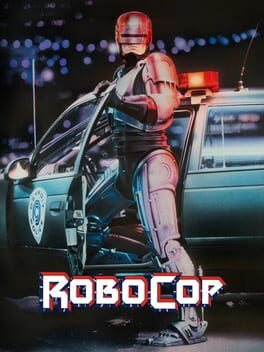
▲
1
▼
According to composer Jonathan Dunn, RoboCop's theme song was concieved at his mother's restaurant when it was closed at night after its weekly live jazz night:
He did note how unfitting the song was to source material, but did not explain why it was chosen for the game.
"At the time I was still living at home, which was above my mother's restaurant in Preston. We had a piano in the restaurant as my mum would have live jazz nights once a week. I would often sit at the piano after the restaurant was closed and come up with a few ideas. One of those was the chord riff for RoboCop. To this day if I'm near a piano I'm always tempted to play it; it's a lovely nostalgic feeling."
He did note how unfitting the song was to source material, but did not explain why it was chosen for the game.
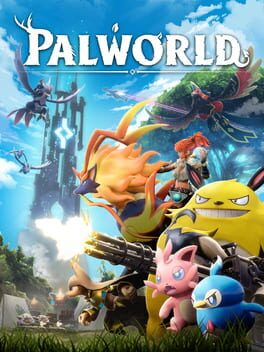
▲
2
▼
Contrary to popular belief, the Pokémon franchise was not the main inspiration for Palworld. According to Pocket Pair CEO Takuro Mizobe, the game was actually based on Ark: Survival Evolved, which also had monster companions in the form of dinosaurs. Similarly, the survival mechanics and in-game tasks were inspired by Rust, and the creature designs were inspired by the Dragon Quest series.

▲
1
▼
Inspired by medieval architecture, Shigeru Miyamoto traveled to Germany to use half-timbered homes in Lower Franconia as reference material and spent a few weeks in Northern Bavaria when creating Hyrule Castle Town.
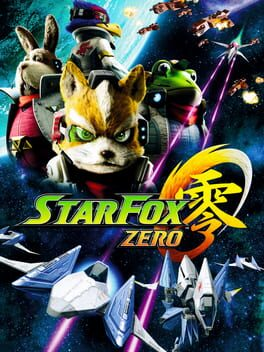
subdirectory_arrow_right Star Fox Guard (Game)
▲
1
▼
 When Star Fox Zero was originally scheduled to come out in the holidays of 2015, it didn't feature a map screen or branching paths, or even (by default) Smart Bombs, two core components of classic Star Fox titles such as the original Star Fox on the SNES or Star Fox 64.
When Star Fox Zero was originally scheduled to come out in the holidays of 2015, it didn't feature a map screen or branching paths, or even (by default) Smart Bombs, two core components of classic Star Fox titles such as the original Star Fox on the SNES or Star Fox 64. Shigeru Miyamoto's original vision for Star Fox Zero, when it began development in 2014, was for it to be more like an episodic TV show (as in, a linear set of episodic, bite-sized missions), similar to his biggest inspiration for Star Fox, the 1965 TV series "Thunderbirds", as opposed to earlier games like Star Fox 64 that were designed more like an epic, longer movie. At E3 2014, he compared the tried-and-true Star Fox gameplay as the "primetime programming", while the quirkier, more experimental fare (referring to Star Fox Guard) as the "late-night programming". As explained by Miyamoto in early 2016, the initial decision to remove Smart Bombs as a core game mechanic was to streamline and simplify the gameplay, to force the player to focus more on using their own techniques and skills to get through the levels. Originally, Smart Bombs would have only been available through the special SNES Arwing mode only accessible through the Fox McCloud amiibo figure or alternatively, collecting all of the game's 70 medals.
However, after Star Fox Zero's initial poor showing at E3 2015, particularity from die-hard Star Fox 64 fans, it was decided to delay the game and attempt to make it more like a long-form movie in the similar vein of SF64, by including an arcade mode (that is unlocked by playing through the story mode, a single linear list of missions like what Miyamoto had intended) with additional branching pathways and also the re-inclusion of Smart Bombs as a universal gameplay mechanic.
Gamenesia summary of info prior to Star Fox Zero's announcement:
https://web.archive.org/web/20140714223509/http://www.gamnesia.com/news/everything-we-know-about-star-fox-u#.U8RbJxvP1qa
Shigeru Miyamoto Time interview:
https://time.com/4245215/starfox-wii-u/
Shigeru Miyamoto Mashable interview:
https://mashable.com/article/star-fox-zero-preview
https://web.archive.org/web/20140714223509/http://www.gamnesia.com/news/everything-we-know-about-star-fox-u#.U8RbJxvP1qa
Shigeru Miyamoto Time interview:
https://time.com/4245215/starfox-wii-u/
Shigeru Miyamoto Mashable interview:
https://mashable.com/article/star-fox-zero-preview
Collection: Nintendo Vs. Series
▲
3
▼
The Nintendo Vs. Series originated as a way to gauge Nintendo's ability to court the North American market following the Great Video Game Crash of 1983. Because the crash had only affected the region's home console market, Nintendo believed that the still-thriving arcade scene would be a good way to test consumer interest in the Famicom library, porting select games to an arcade format. Despite the collapse of a deal with Atari to distribute the Famicom overseas, and despite the pessimistic results of market research, Nintendo president Hiroshi Yamauchi still believed that the company could successfully enter the field.
Collection: Ōkami
▲
4
▼
According to former Clover CEO Atsushi Inaba, the series' trademark Celestial Brush mechanic was directly inspired by the ukiyo-e art style. In a 2006 interview with GameSpy, Inaba stated "Once we fixed ourselves on a graphical style and got down to the brushwork, we thought, 'Wouldn't it be great if we could somehow get the player involved and participate in this artwork instead of just watching it?'" These comments also explain why in both games, activating the Celestial Brush renders the current frame as a scroll of washi paper.
